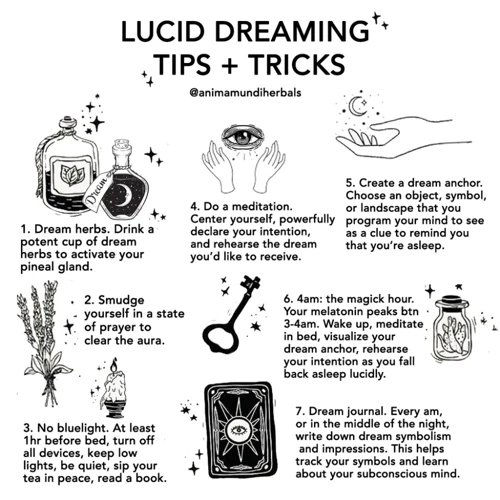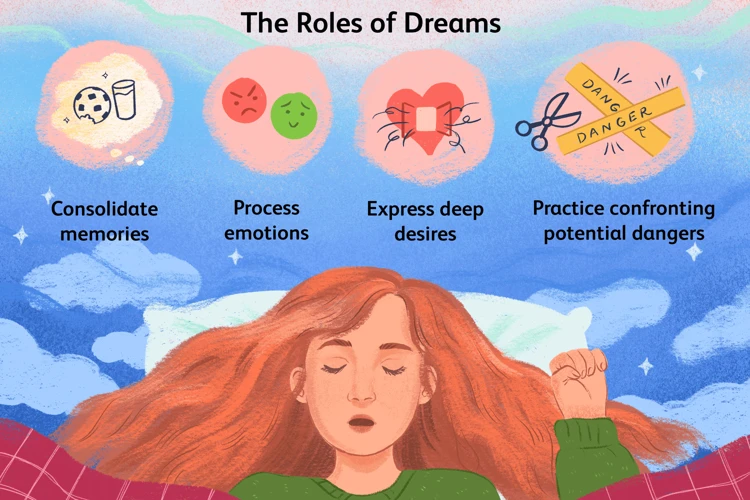Have you ever awoken from a nightmare, heart pounding and covered in sweat, wishing there was a way to conquer those terrifying dreams? Look no further than the power of lucid dreaming, a technique that allows you to be aware and in control of your dreams. In this article, we will explore the fascinating world of lucid dreaming and how it can be used as a powerful tool to overcome nightmares. By understanding the impact of nightmares and common themes that occur, we can delve into the techniques that will help you master the art of lucid dreaming. With these tools at your disposal, you can transform your nightmares into pleasant dreams and conquer your fears one night at a time.
The Power of Lucid Dreaming

|
Lucid dreaming is an extraordinary ability that allows individuals to become aware and actively participate in their dreams. It provides a unique opportunity to tap into the deepest corners of our subconscious minds and harness its immense potential. By achieving lucidity in our dreams, we can transcend the boundaries of reality and unlock a plethora of benefits. One of the most profound powers of lucid dreaming is the ability to confront and conquer nightmares. Through lucid dreaming, we gain control over the dream world and have the opportunity to transform our darkest fears into empowering experiences. Rather than being passive observers, we become active participants, capable of rewriting the script of our dreams to create more positive outcomes and overcome the tormenting nightmares that haunt us.
Lucid dreaming empowers us to confront our deepest fears head-on and diminish their power over us. By recognizing that we are in a dream, we can gain a sense of control and courageously face the monsters and terrors that plague our nightmares. This newfound control allows us to rewrite the narrative, turn the tables on our fears, and transform them into opportunities for growth and self-discovery. The power of lucid dreaming lies in its ability to provide a safe and controlled environment for us to explore and process our emotions, trauma, and fears. Lucid dreaming has been proven to have therapeutic benefits as it offers a unique platform for psychological healing and personal growth. During lucid dreams, we can engage in vivid simulations of real-life situations and practice new skills, overcome phobias, and even process deep-seated emotional trauma. This immersive and transformative experience has the potential to enhance self-awareness, boost confidence, and improve overall well-being. By harnessing the power of lucid dreaming, we can embark on a journey of self-discovery, empowerment, and emotional healing. Whether you seek to conquer your nightmares, explore the depths of your subconscious mind, or unlock your creative potential, lucid dreaming is a powerful tool that can elevate your dream experiences to a whole new level. |
Understanding Nightmares

Nightmares are vivid and disturbing dreams that can leave us feeling frightened and unsettled upon waking. They are often characterized by intense fear, helplessness, and a sense of danger. Understanding nightmares is an important step in conquering them through lucid dreaming. Nightmares can have a profound impact on our mental and emotional well-being, causing sleep disturbances, anxiety, and even affecting our daily lives. They can stem from a variety of factors, including traumatic experiences, stress, anxiety, or even certain medications. By exploring the common themes and symbols that appear in nightmares, we can gain insight into the underlying emotions and experiences that our subconscious mind is trying to process. This understanding allows us to delve deeper into the root causes of our nightmares and develop strategies to manage and overcome them. So, let’s explore the impact of nightmares and how they can be processed to help us on our journey to conquer them through lucid dreaming.
The Impact of Nightmares
Nightmares can have a profound impact on our mental and emotional well-being. They are intense and distressing dreams that can leave us feeling scared, anxious, and unsettled long after we wake up. The vivid and often terrifying nature of nightmares can evoke a wide range of emotions, from fear and sadness to anger and helplessness. These intense emotional experiences can have a lasting effect on our psyche, affecting our mood, sleep patterns, and overall quality of life.
Nightmares often serve as a reflection of our subconscious thoughts, fears, and unresolved emotions. They can be triggered by various factors including stress, trauma, anxiety, or even certain medications. Nightmares can act as a gateway for our minds to process and release these pent-up emotions, serving as a form of emotional processing during sleep. However, when nightmares become recurrent or start interfering with our daily life, it’s important to address and manage them effectively.
In addition to the emotional impact, nightmares can also affect our physical well-being. Waking up from a nightmare can disrupt our sleep and leave us feeling tired and fatigued during the day. It can also lead to poor sleep quality or insomnia, exacerbating feelings of anxiety and stress. This vicious cycle can have a detrimental effect on our overall health and functioning.
It is crucial to recognize the significance of nightmares and take steps to address them. Understanding the underlying causes of nightmares is a key step towards managing them effectively. By exploring the root causes of nightmares, such as trauma or emotional distress, we can work towards finding solutions and coping mechanisms that can help alleviate their impact. Seeking professional help or therapy can also be beneficial in providing guidance and support in managing nightmares and the emotions they elicit.
In the next sections, we will delve into the techniques and strategies that lucid dreaming offers to conquer nightmares and transform them into positive and empowering experiences. These techniques not only enable us to gain control over our dreams but also provide valuable insights into our subconscious mind and emotional well-being. By harnessing the power of lucid dreaming, we can take charge of our nightmares and embark on a journey of healing and personal growth.
Common Themes in Nightmares
When exploring nightmares, it becomes apparent that certain themes tend to recur across different individuals. These common themes in nightmares can vary, but they often tap into primal fears and anxieties that are deeply ingrained in our collective consciousness. One prevalent theme is being chased or pursued by a menacing figure or unknown entity. This is linked to feelings of vulnerability, powerlessness, and the fear of being overwhelmed. Nightmares involving falling, flying uncontrollably, or being trapped in confined spaces evoke a sense of loss of control and the fear of the unknown. Another common theme is the experience of being attacked or harmed, which can reflect underlying anxieties about personal safety or feeling threatened by external forces.
Nightmares often manifest symbolic representations of our fears and concerns. For instance, encountering monstrous creatures or animals can symbolize repressed emotions or uncivilized aspects of ourselves that we fear confronting. Similarly, being unprepared or inadequately equipped in a nightmare may reflect feelings of being unprepared for the challenges and uncertainties of waking life. Nightmares can also reflect real-life traumas or unresolved conflicts, depicting traumatic events or situations that continue to haunt us.
Understanding these common themes in nightmares is crucial for both identifying their underlying psychological significance and overcoming their grip on our subconscious minds. By recognizing the patterns and symbols within our nightmares, we can gain insights into our fears, anxieties, and unresolved issues. This self-awareness provides a starting point for addressing and working through these challenges, whether through therapy, journaling, or other techniques aimed at managing nightmares and processing difficult emotions. The power of lucid dreaming can be particularly transformative in this regard, offering a platform to confront and reshape these recurring themes within the safe confines of the dream world, ultimately leading to personal growth and healing.
What is Lucid Dreaming?

Lucid dreaming is a fascinating phenomenon in which individuals become aware that they are in a dream while they are dreaming. Unlike regular dreams where we often passively observe the events unfolding, lucid dreaming allows us to actively participate and shape our dream experiences. In a lucid dream, we possess a heightened level of consciousness and self-awareness, enabling us to recognize the dream as a construct of our own mind. This awareness grants us the ability to control and manipulate the dream environment, characters, and events according to our intentions and desires. It’s like stepping into a vivid alternate reality where the boundaries of what is possible are only limited by our imagination.
This state of lucidity can occur spontaneously, but it can also be induced through various techniques and practices. Once we enter a lucid dream, we can explore and interact with our dream world in ways that are not possible in waking life. We can fly across vast landscapes, visit mythical realms, converse with dream figures, and even indulge in extraordinary experiences that defy the laws of physics. The level of control and immersion in lucid dreaming is both exhilarating and empowering, offering us a gateway to a realm where the impossible becomes possible.
Lucid dreaming holds immense potential for personal growth, self-discovery, and overcoming challenges such as nightmares. By learning to recognize the unique characteristics of our dream state, we can harness the power of lucid dreaming to conquer our fears, explore our subconscious, and tap into our limitless creativity. Whether you are a novice or an experienced lucid dreamer, the possibilities within the realm of lucid dreaming are boundless and ready to be explored.
Image by pixabay.com
How Lucid Dreaming Can Help Conquer Nightmares

Lucid dreaming provides a powerful tool for conquering nightmares, as it allows individuals to actively confront and transform their scary dreams. With lucidity, we are empowered to become the masters of our dream world, giving us the ability to change the course of the dream narrative and turn nightmares into more pleasant experiences. By cultivating awareness and control within our dreams, we can disrupt the cycle of fear and anxiety that nightmares bring. Through lucid dreaming, we are able to confront our deepest fears, process emotions, and gain a sense of empowerment that can extend beyond the dream realm. Instead of being victims of nightmares, we become active participants in our dreams, reclaiming our power and transforming our inner demons into sources of personal growth and healing. The transformative potential of lucid dreaming is immense, offering a pathway towards conquering nightmares and finding resolution for the underlying causes of these distressing dreams.
Awareness and Control
|
One of the key aspects of lucid dreaming is the development of awareness and control within the dream state. When we become lucid in a dream, we are fully aware that we are dreaming, allowing us to recognize the dream as a construct of our own mind. This heightened level of awareness enables us to take control of the dream narrative and shape it according to our desires.
Developing awareness begins with practicing reality checks throughout our waking lives. These checks involve questioning the nature of reality by examining cues that distinguish dreams from waking life. Some popular reality checks include looking at a clock or a text, then looking away and looking back again to see if the time or text has changed, or attempting to push your finger through the palm of your hand. By incorporating these reality checks into our daily routine, we train our minds to question our state of consciousness and increase the likelihood of becoming lucid during dreams. Once lucidity is achieved, the next step is to establish control over the dream environment. This can be done through visualization and intention-setting. By mentally visualizing the desired dream scenario and setting specific intentions before falling asleep, we can influence the course of the dream once lucidity is attained. For example, if we are experiencing a nightmare, we can consciously intend to confront and overcome the source of fear, transforming the nightmare into a more positive and empowering experience. Lucid dreaming provides an incredible opportunity to improve our overall well-being by granting us the ability to confront our fears and gain control over our emotions. By developing awareness and control within our dreams, we can face the causes of nightmares head-on, gaining a sense of empowerment and freedom from the grip of fear. |
Changing Nightmares into Pleasant Dreams
|
Changing nightmares into pleasant dreams is one of the remarkable abilities that lucid dreaming offers. Instead of enduring the torment of recurring nightmares, we can actively take control of the dream narrative and transform the experience into something positive and enjoyable. Through lucid dreaming, we have the power to alter the course of our dreams and replace fear and anxiety with joy and peace.
When we become aware that we are dreaming in the midst of a nightmare, we can employ various techniques to change the dream’s trajectory. One popular method is visualization. By visualizing a positive and calming scenario in our minds, we can redirect the dream towards a more pleasant direction. For example, imagining ourselves in a beautiful serene landscape or surrounded by loved ones can shift the dream’s atmosphere and emotions. Another technique is affirmation. By repeating positive statements to ourselves, we can alter our subconscious mindset within the dream and create a shift in the dream’s content. Affirmations like “I am safe and protected” or “I have the power to change this dream” can empower us to overcome the negative elements of a nightmare and transform it into a positive experience. Lucid dreamers may choose to confront the source of their fear directly, turning it into an opportunity for growth. By facing our fears head-on and exploring their underlying causes, we can gain insights into our subconscious and work towards resolving them in waking life. This process allows us to reclaim control over our emotions and free ourselves from the grip of repeated nightmares. Through these techniques and more, lucid dreaming provides a powerful tool for turning nightmares into sources of self-empowerment and personal growth. By actively participating in our dreams and shifting their narrative, we can conquer the monsters that haunt us and create a world of pleasant dreams. |
Techniques for Lucid Dreaming

| Lucid dreaming is a skill that can be cultivated through various techniques. One effective technique for inducing lucid dreams is performing reality checks throughout the day. This involves questioning your reality by checking if you are dreaming or awake. These reality checks can include looking at your hands, trying to push your finger through your other hand, or observing the details of your surroundings. By making this a habit, you increase the likelihood of performing the same reality check in your dream. Another technique is keeping a dream journal, where you record your dreams as soon as you wake up. This helps improve dream recall and increases self-awareness within dreams. Mediation and mindfulness practices can also aid in developing lucid dreaming skills by enhancing overall mental clarity and focus. By incorporating these techniques into your daily routine, you can increase your chances of experiencing lucid dreams and embark on a journey of dream exploration and self-discovery. |
Reality Checks
|
Reality checks are an essential technique for inducing lucid dreaming. These checks act as cues to help us distinguish between the dream world and reality, ultimately leading to the realization that we are in a dream. By regularly performing reality checks throughout our waking hours, we train our minds to question our surroundings, creating a habit that carries into our dream state.
One effective reality check technique is the “finger through the palm” method. Throughout the day, examine your hand and try to push one of your fingers through the palm. In dreams, the laws of physics don’t apply, so your finger may pass through your hand effortlessly. By practicing this reality check several times a day, you are conditioning your mind to perform the same check when you see your hand in a dream. Once you attempt to push your finger through your palm and it actually goes through, you will realize that you are dreaming and achieve lucidity. This simple technique can be a powerful tool in your lucid dreaming arsenal. Another popular reality check involves reading written text. In dreams, the text often appears blurry or nonsensical, as our minds struggle to replicate the intricate details of written language. By regularly attempting to read signs, books, or digital displays throughout the day, you develop a habit that will carry over into your dreams. When you encounter text in a dream and find that it is difficult to read or constantly changing, it can trigger the realization that you are in a dream. It’s important to perform reality checks consistently throughout the day to strengthen the habit. Set reminders on your phone or use visual cues in your environment to prompt you to perform these reality checks. By frequently questioning your reality, you increase the likelihood of experiencing lucid dreaming. Reality checks are not only a valuable tool for inducing lucid dreams but also for overcoming nightmares. Once you become proficient in performing reality checks during your waking state, you can also integrate them into your dreams. When you encounter a distressing or anxiety-provoking situation in a dream, perform a reality check to determine if you are dreaming. By doing so, you can trigger lucidity and gain control over the dream narrative, transforming your nightmares into less threatening or even pleasant experiences. |
Keeping a Dream Journal
Keeping a dream journal is a crucial practice for anyone interested in exploring the world of lucid dreaming and conquering nightmares. By recording your dreams immediately upon waking, you create a tangible record of your dream experiences and provide a foundation for developing your dream recall abilities.
The process is simple but impactful. Keep a journal and pen beside your bed to ensure you can write down your dreams as soon as you wake up. Begin by jotting down any fragments or snippets of the dream that you can remember. The more details, the better. Even seemingly insignificant elements can be valuable for later analysis.
As you become more consistent with dream journaling, you’ll notice that your dream recall improves. You’ll start remembering more and more details of your dreams, making it easier to identify patterns and themes. This increased dream recall is an essential step towards lucid dreaming and understanding the complex workings of your subconscious mind.
By reviewing your dream journal regularly, you may also identify recurring themes or triggers that contribute to your nightmares. This awareness allows you to delve deeper into the root causes of your unsettling dreams and explore possible connections to real-life experiences or emotions. Understanding these connections can be instrumental in working through and resolving any underlying issues that contribute to nightmares.
In addition to serving as a tool for self-discovery, keeping a dream journal helps develop a stronger connection between your waking and dreaming worlds. Writing down and reflecting upon your dreams throughout the day reinforces the idea that your dreams are important and worth paying attention to. This reinforcement can lead to increased lucidity within your dreams, allowing you to recognize when you are dreaming and take control of the experience.
Keeping a dream journal is a foundational practice for lucid dreaming and addressing nightmares. It enhances dream recall, facilitates self-reflection, and strengthens the bridge between your conscious and subconscious mind. Start today, and you’ll be amazed at the insights and progress you can achieve on your lucid dreaming journey.
Meditation and Mindfulness
|
Meditation and mindfulness practices play a crucial role in enhancing the ability to achieve lucidity in dreams. By incorporating these techniques into our daily routine, we can cultivate a heightened state of awareness that seamlessly translates into our dream state. Regular meditation helps to quiet the mind, increase focus, and improve self-awareness. This translates to greater clarity and presence in dreams, making it easier to recognize when we are in a dream state. Mindfulness practices, such as being fully present in the moment, observing our thoughts and feelings without judgment, and cultivating a sense of inner calm, also contribute to lucid dreaming. When we practice mindfulness throughout the day, we carry this heightened awareness into our dreams, making it more likely that we will question the reality of the dreamscape. Both meditation and mindfulness can be integrated into a pre-sleep routine to enhance the likelihood of lucid dreaming. Taking a few moments to cultivate a calm and focused state of mind before bed can set the stage for vivid and lucid dreams. Engaging in relaxation techniques, such as deep breathing exercises or progressive muscle relaxation, can further promote a state of tranquility and prepare the mind for lucid dreaming. By incorporating meditation and mindfulness practices, we can strengthen our ability to recognize and control our dreams, ultimately leading to a greater level of empowerment and mastery over our nighttime experiences. Understanding the causes of nightmares and learning how to process emotions associated with them can also be beneficial in lucid dreaming techniques. |
Developing Dream Recall

Developing dream recall is a fundamental aspect of lucid dreaming that can greatly enhance our ability to explore and understand our dreams. When we improve our dream recall, we become more adept at recognizing patterns, themes, and emotions within our dreams, giving us valuable insights into our subconscious mind. One effective technique for enhancing dream recall is through journaling. By keeping a dream journal, we can record our dreams immediately upon waking, capturing the details and emotions while they are still fresh in our minds. This practice not only helps to solidify our dream memories but also allows us to revisit and analyze them later. Additionally, enhancing memory and awareness through activities such as meditation and mindfulness can further improve dream recall. These practices cultivate a heightened sense of presence and attentiveness, making it easier to remember and recall dreams. By developing dream recall, we can delve deeper into the realm of our dreams, gaining a better understanding of ourselves and our emotions, and ultimately facilitating the process of processing emotions(source).
Improving Dream Recall through Journaling
Journaling is a valuable technique for improving dream recall and enhancing the overall experience of lucid dreaming. Keeping a dream journal allows us to capture and document our dreams, ensuring that they are fresh in our minds upon waking. This practice strengthens our dream recall abilities and enables us to recall more vivid details from our dreams.
To begin, keep a journal and pen by your bedside. As soon as you wake up, even if it’s the middle of the night, grab your journal and start writing down everything you remember from your dreams. It’s essential to capture as many details as possible, including the people, places, emotions, and events that took place. Don’t worry about grammar or coherence – the key here is to record the raw elements of your dreams. This process signals to your mind that dreams are significant and worth remembering.
Adding a personal touch to the dream journal can further enhance dream recall. Use colorful pens, highlight important elements, and even sketch scenes or symbols that stood out to you. These visual cues can trigger memories and make the dream journaling experience more engaging.
Reviewing your dream journal regularly is equally important. Take the time to read through your past entries and look for patterns or recurring themes. This reflection can reveal insights into your subconscious mind and provide guidance for future lucid dreaming endeavors. Additionally, rereading the journal before bed serves as a gentle reminder to your mind that dreams are meaningful and encourages your subconscious to remain receptive to lucidity.
By consistently journaling your dreams, you will notice a significant improvement in dream recall over time. You will become more attuned to the details and nuances of your dreams, allowing you to spot recurring dream signs or themes, which can increase your chances of becoming lucid. The act of journaling also fosters a deeper connection with your dreams and strengthens your overall dream awareness.
So, grab your journal and start documenting your dreams today. By actively engaging in the practice of journaling, you will sharpen your dream recall abilities, gain valuable insights into your dream world, and pave the way for more lucid dreaming adventures.
Enhancing Memory and Awareness
|
Enhancing Memory and Awareness is a crucial aspect of developing effective lucid dreaming skills. By improving our memory and awareness, we can better recognize and remember our dreams, leading to more frequent and vivid lucid dream experiences.
1. Mnemonic Techniques: Mnemonic techniques are memory-enhancing strategies that help us improve our dream recall and overall memory capacity. One effective mnemonic technique is using visual cues or mental imagery to create associations with dream content. For example, before going to bed, you can visualize a specific symbol or object that will act as a trigger to remind you that you are dreaming. This association can help you become more aware while dreaming and increase your chances of achieving lucidity. 2. Reality Testing: Reality testing is another method to enhance memory and awareness. It involves regularly questioning the nature of reality throughout your waking hours. By making a habit of checking if you are dreaming or awake, you train your brain to question your surroundings. When this habit carries over to your dreams, it becomes easier to recognize the inconsistencies that indicate you are in a dream. 3. Mindfulness Meditation: Practicing mindfulness meditation can greatly enhance your overall awareness and focus, which in turn can have a positive impact on your ability to have lucid dreams. Engaging in regular meditation sessions increases your ability to maintain a state of alertness and presence while dreaming. This heightened awareness can help you realize that you are in a dream and ultimately trigger a lucid dreaming experience. 4. Before-Bed Intentions: Setting clear intentions before bed is another effective way to enhance your memory and awareness for lucid dreaming. Before falling asleep, repeat affirmations or statements such as “I will remember my dreams” or “I will become lucid in my dreams.” By affirming these intentions, you program your subconscious mind to prioritize dream recall and lucidity. By implementing these techniques and incorporating them into your daily routine, you can greatly enhance your memory and awareness, paving the way for more lucid dreaming opportunities and a richer dream life. |
Creating a Safe Dream Environment

Creating a safe dream environment is crucial in harnessing the power of lucid dreaming and overcoming nightmares. Visualizations and affirmations are powerful tools that can be used to set the stage for a positive dream experience. Before sleep, practice visualizing a peaceful and serene setting, such as a tranquil beach or a lush forest. Engage all your senses and imagine yourself feeling safe and calm in this environment. Combine this visualization with affirmations, such as “I am in control of my dreams” and “I am safe and protected in my dream world.” By consistently incorporating these visualizations and affirmations, you can create a strong foundation for pleasant and empowering dreams. Additionally, setting intentions before sleep can help program your mind to focus on positive experiences during the dream state. Whether it’s stating your intention to conquer your fears or to explore a specific scenario, clearly define your desired outcome and repeat it to yourself before drifting off to sleep. By consciously creating a safe dream environment, you can pave the way for transformative and empowering lucid dreaming experiences.
Visualizations and Affirmations
|
Visualizations and affirmations are powerful techniques that can assist in creating a safe and positive dream environment. By incorporating these practices into your bedtime routine, you can lay the groundwork for lucid dreaming and overcome nightmares. Visualizations involve mentally picturing calming and serene scenes, such as a peaceful beach or a beautiful garden. By vividly imagining these tranquil settings, you can evoke feelings of relaxation and tranquility before drifting off to sleep.
Affirmations, on the other hand, involve using positive statements to shift your mindset and subconsciously program your dreams. By repeating affirmations such as “I am in control of my dreams” or “I am capable of transforming nightmares into pleasant experiences,” you can reinforce your intention to conquer your nightmares through lucid dreaming. These affirmations serve as a reminder of your inner strength and empower you to confront and transform the negative aspects of your dreams. To incorporate visualizations and affirmations into your bedtime routine, find a quiet and comfortable space. Close your eyes and visualize your desired dream environment, allowing yourself to become fully immersed in the sensory details. Imagine the warmth of the sun, the gentle sound of waves, or the scent of blooming flowers. Concurrently, repeat your chosen affirmations silently or aloud, focusing on the words and embodying their meaning. Consistency is key when practicing visualizations and affirmations. Make it a habit to incorporate these techniques every night before sleep, gradually training your mind to associate a positive mindset and intentions with the dream state. Over time, your dreams will start to mirror these visualizations and affirmations, providing an opportunity to conquer nightmares and gain lucidity. By utilizing the power of visualizations and affirmations, you can create a safe and empowering dream environment that supports your journey towards conquering nightmares through lucid dreaming. These techniques serve as gentle reminders of your ability to transform your dreams and free yourself from the grip of fear and anxiety. |
Setting Intentions before Sleep
Setting Intentions before Sleep:
Setting intentions before sleep serves as a powerful psychological tool to program your mind for lucid dreaming. It helps to align your conscious and subconscious minds, increasing the likelihood of becoming aware within your dreams. By reinforcing your intentions through visualization and affirmations, you are sending a clear message to your subconscious that lucid dreaming and conquering nightmares are important to you. This focused intention-setting before sleep can significantly enhance the success of your lucid dreaming practice and pave the way for transformative dream experiences. |
Using Lucid Dreaming Techniques during Nightmares

When faced with a nightmare, utilizing lucid dreaming techniques can be a game-changer. Instead of being at the mercy of horrifying dream scenarios, we can take control and transform the narrative. The key is recognizing that we are in a dream. Through reality checks and keeping a dream journal , we can increase our awareness and ability to recognize when we are dreaming. Once we establish lucidity, we can use our newfound power to alter the dream environment and confront our fears head-on. By avoiding triggers and summoning courage, we can face the monsters and nightmares that haunt us. Lucid dreaming provides a platform to rewrite the script, transform nightmares into empowering experiences, and ultimately triumph over our deepest fears.
Recognizing You’re in a Dream
|
Recognizing that you’re in a dream is the key first step to entering a state of lucidity and taking control of the dream. There are several methods you can use to help you become aware that you’re in a dream. One effective technique is reality checks. These are simple actions or observations that you perform throughout the day to test whether you’re dreaming or awake. Some common reality checks include looking at your hands and trying to push your finger through your palm, trying to read a sentence multiple times to see if it changes, or attempting to fly by jumping off the ground. By regularly practicing these reality checks during waking hours, you’ll be more likely to perform them in a dream and realize that you’re dreaming.
Another way to recognize that you’re in a dream is by paying attention to dream signs. Dream signs are recurring themes, people, places, or events that frequently appear in your dreams. By keeping a dream journal and recording your dreams, you can start to identify these patterns and identify when you may be in a dream. For example, if you often dream about flying or being chased, those may be strong indicators that you’re in a dream when you experience similar situations. Additionally, increasing your overall self-awareness can help you become more conscious in your dreams. Practices such as meditation and mindfulness can enhance your ability to observe and be present in the moment, which can carry over into your dream state. By cultivating a habit of self-reflection and being more attentive to your thoughts and surroundings, you’ll be more likely to question the reality of your experiences and realize when you’re in a dream. It’s important to note that recognizing you’re in a dream can be a gradual process and may not happen immediately. However, with consistent practice and a heightened sense of self-awareness, you’ll become more proficient at identifying the dream state. Once you have that awareness, you can move on to the next step of taking control of the dream and shaping it according to your desires. |
Taking Control of the Dream
Taking control of the dream is a fundamental aspect of lucid dreaming that allows individuals to actively influence the dream scenario. Once you become aware that you are in a dream, you can employ various techniques to assert your control and shape the dream experience. One effective method is visualization, where you vividly imagine the desired changes or outcomes in the dream. By focusing on the desired transformation, such as turning a scary monster into a friendly companion or changing the environment to something more pleasant, you can guide the dream in a positive direction.
Another technique to take control is through verbal commands. By assertively stating your intentions out loud within the dream, you can influence the dream elements and direct the course of events. For example, if you find yourself in a nightmare with a threatening presence, confidently affirm that you are safe and in control. This declaration can help shift the dream’s dynamics and empower you to overcome your fears.
In addition to visualization and verbal commands, physical actions can also be used to assert control. For instance, in a lucid dream, you can choose to fly, explore new places, or interact with dream characters. By actively engaging with the dream environment, you solidify your control and enhance your overall dream experience.
It’s important to note that taking control of the dream requires practice and patience. It may take several attempts to fully master these techniques, but with persistence, the ability to guide and manipulate your dreams becomes more natural. As you gain more confidence in your lucid dreaming abilities, the boundaries of what you can achieve within your dreams widen, offering limitless possibilities for personal growth and self-discovery.
Taking control of the dream is not only a thrilling aspect of lucid dreaming but also a transformative one. By becoming an active participant in your dreams, you can conquer nightmares, overcome fears, and cultivate a sense of empowerment in both the dream world and waking life. The ability to take control in your dreams is a remarkable tool that allows you to shape your own experiences, explore the depths of your consciousness, and tap into the profound potential of lucid dreaming.
Avoiding Triggers and Confronting Fears
Avoiding triggers and confronting fears are essential techniques to utilize during lucid dreaming when faced with nightmares. One way to avoid triggers is to identify recurring themes or symbols that often appear in your nightmares. These could be specific objects, people, or scenarios that consistently evoke fear or anxiety. By recognizing these triggers, you can develop a strategy to either avoid them altogether or change the way you perceive and interact with them in the dream.
Confronting fears, on the other hand, involves directly facing the source of your nightmares. This can be challenging but is crucial for personal growth and overcoming anxiety. When you encounter a fearful situation in a lucid dream, remind yourself of the dream’s nature and your ability to control the outcome. Embrace the fear and challenge its hold over you. For example, if you often dream of being chased, confront your pursuer instead of fleeing. Assert your power by transforming them into something less intimidating or by standing your ground and overcoming them.
Another technique to confront fears is by practicing visualization and affirmation exercises before sleep. By visualizing positive outcomes and affirming your strength and resilience, you prime your mind to approach challenging situations with confidence and determination. This mindset extends into your dreams, empowering you to confront your fears head-on.
Remember, facing fears through lucid dreaming takes time and practice. Be patient with yourself and celebrate even small victories along the way. Over time, you will become more adept at transforming your nightmares into empowering experiences, ultimately conquering your fears and finding inner peace.
Internal Link: Learn more tips for managing nightmares.
Overcoming Nightmares with Lucid Dreaming Success Stories
Overcoming nightmares through lucid dreaming has been a life-changing experience for many individuals. Let’s explore some success stories that highlight the power and effectiveness of lucid dreaming in conquering nightmares:
These success stories demonstrate the transformative power of lucid dreaming in overcoming nightmares. By becoming aware and taking control of their dreams, individuals like Sarah and Mark not only conquered their fears but also gained profound personal growth and healing. Lucid dreaming offers a powerful and accessible tool for anyone looking to turn the tide on their nightmares and reclaim their peace of mind. |
Conclusion
|
Embarking on the journey of lucid dreaming can be a life-changing experience. It offers a powerful tool to conquer nightmares and tap into the limitless potential of our subconscious minds. By gaining awareness and control within our dreams, we can transform our darkest fears into empowering moments of growth and self-discovery. Lucid dreaming allows us to confront and process our emotions, trauma, and fears in a safe and controlled environment. It offers therapeutic benefits and the opportunity for personal growth.
Through techniques such as reality checks, dream journaling, and meditation, we can enhance our ability to achieve lucidity in our dreams. By developing dream recall and creating a safe dream environment, we can set the stage for transformative dream experiences. The power of lucid dreaming lies in its ability to provide a platform for psychological healing, self-awareness, and personal empowerment. Whether you’re interested in conquering nightmares, exploring the depths of your mind, or simply enhancing your dream experiences, lucid dreaming can be a powerful tool to unlock your full potential. By harnessing the power of your dreams, you can navigate the dream world with confidence, creativity, and control. So, start your journey into lucid dreaming today and unlock a world of possibilities within your own mind. |
Frequently Asked Questions
1. Can anyone learn how to lucid dream?
Yes, anyone can learn how to lucid dream with practice and dedication. It may take some time to develop the necessary skills, but with the right techniques and mindset, anyone can achieve lucidity in their dreams.
2. Are there any potential risks associated with lucid dreaming?
No, lucid dreaming is generally safe and poses no known risks. However, it’s essential to maintain a healthy sleep schedule and not rely solely on lucid dreaming as a substitute for quality rest.
3. Can lucid dreaming be used to overcome specific phobias?
Absolutely! Lucid dreaming can be a powerful tool for overcoming phobias. By confronting your fears within a controlled dream environment, you can gradually desensitize yourself and build confidence in real-life situations.
4. What should I do if I become lucid in a nightmare?
If you become lucid in a nightmare, the first step is to remind yourself that you are in control. Take deep breaths, focus on positive intentions, and try to change the course of the dream by visualizing a more pleasant outcome.
5. Can lucid dreaming improve my creativity?
Yes, lucid dreaming has been known to enhance creativity. In the dream world, you can tap into your subconscious mind and explore new ideas, scenarios, and possibilities that can fuel your creativity and inspire your waking life.
6. Can lucid dreaming help with problem-solving?
Absolutely! Lucid dreaming can be a valuable tool for problem-solving. By immersing yourself in the dream environment, you can gain new perspectives, access suppressed memories, and find innovative solutions to real-life challenges.
7. Does lucid dreaming have any benefits for overall mental well-being?
Yes, lucid dreaming can have numerous benefits for mental well-being. It can enhance self-awareness, help manage stress and anxiety, improve sleep quality, and provide a platform for emotional healing and personal growth.
8. Can lucid dreaming be used to enhance lucidity and awareness during waking life?
Yes, practicing lucid dreaming techniques can heighten your overall lucidity and awareness during waking life. It can help develop mindfulness, improve focus and concentration, and promote a greater sense of presence in your daily experiences.
9. Is there an ideal time to practice lucid dreaming techniques?
There isn’t a specific ideal time to practice lucid dreaming techniques. However, many find that techniques such as reality checks and visualization before bedtime increase the likelihood of becoming lucid in dreams.
10. Can lucid dreaming be combined with other practices like meditation?
Absolutely! Combining lucid dreaming with practices like meditation can enhance the overall experience. Meditation can help cultivate a focused and calm mind, making it easier to enter a lucid dream state and maintain control.








